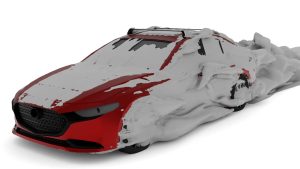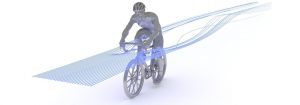Aerodynamics applied to automobiles can be defined as the study of the influence that air has on the vehicle, depending on its shape. It is fundamental in the design of cars, because the behavior of the air influences many aspects, one of the most important being the resistance to advance.
Specifically, the aerodynamic effect, on average, accounts for between 8 and 12% of total fuel consumption. Increasing its effect as the forward speed increases. In other words, the higher the speed, the greater the influence that aerodynamic resistance ends up having on fuel consumption.
To understand this phenomenon and how it varies with speed, let’s talk about the two components that affect this aerodynamic resistance, the vehicle’s own movement and its friction with the air.
How does the advance of the car affect the drag force?
As a vehicle moves forward, it must overcome a significant wind load. But more importantly, it must also fill the void created behind itself as soon as possible. When moving at low speeds, the air has enough time to occupy the space left free by the vehicle as it moves. Therefore, the force to be overcome is small. Also, the air pressure impact on the front area of the body is light, because it has enough time to flow.
However, as the speed increases, the mass of air displaced is much larger per unit of time. For this reason, the air that fills the gap the car leaves free when moving forward decreases, thus creating a depression zone in the form of turbulence. This depression sucks in the vehicle from the rear, opposing its advance. Meanwhile, in the front area a high pressure is created that also offers resistance to movement due to the accumulation of air that accumulates when moving forward. Consequently, the force that the vehicle must overcome is large..
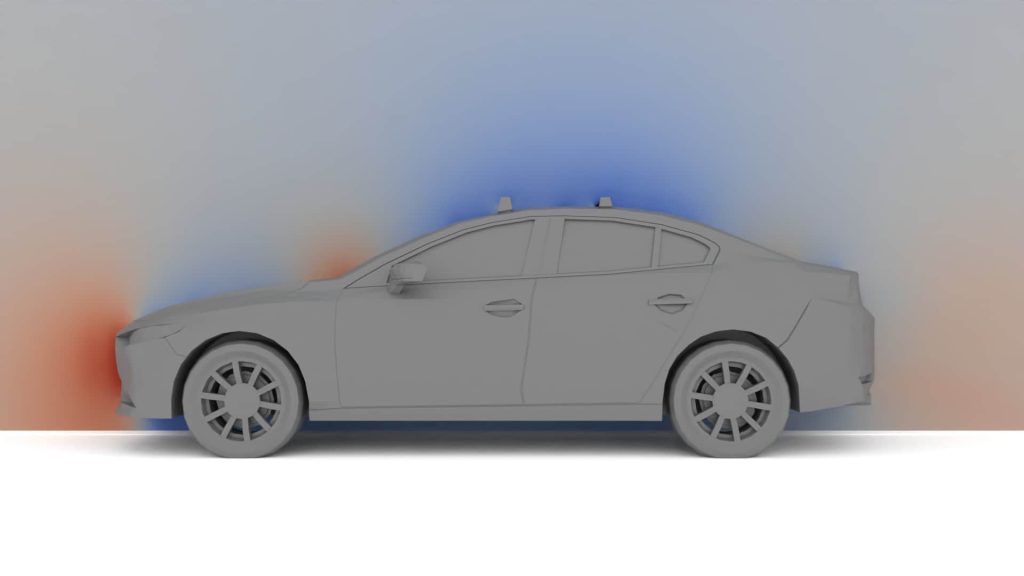
According to the design of the vehicle, more or less aerodynamic, the resistance will be lower or higher respectively. In the same way, the less air resistance a vehicle offers, the more efficient it will be and will require less energy consumption (fuel or battery consumption in the case of electric vehicles), which translates into greater vehicle autonomy.
How does friction affect to the aerodynamic drag resistance?
This type of resistance is given because of air’s viscosity. This viscosity causes the speed of the car to be transmitted to the layers of air that are closest to the car, generating a force of resistance.
Therefore, the layers of air closest to the surface of the car go at the same speed as the vehicle itself, while in the furthest layers, the air goes at a lower speed. This difference or velocity gradient, near the wall of the vehicle, is known as the boundary layer.
To minimize drag, the boundary layer should be as thin as possible. We can achieve this with a highly polished surface, to disturb the air as little as possible. In this sense, the smaller the contact surface of the vehicle with the air (or wet surface), the lower the aerodynamic resistance.
In very aerodynamic bodies, this boundary layer is usually quite thin throughout the entire geometry. However, in less aerodynamic forms, this boundary layer can become detached, that is, greatly increase its thickness. When this detachment occurs, vortices are generated that offer greater resistance to the advance of the vehicle.
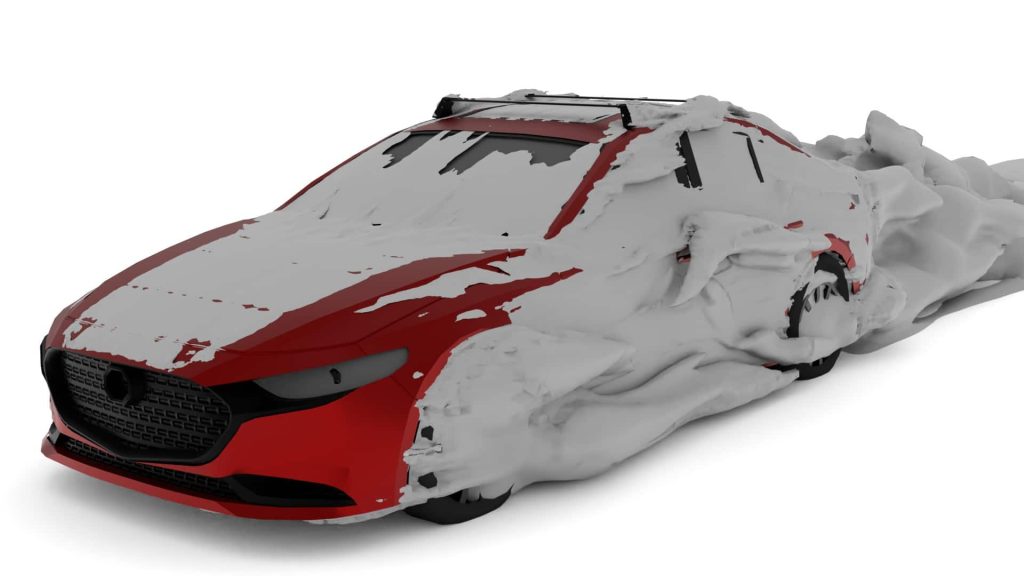
To clearly understand this, let’s see the effect of aerodynamic resistance in a practical way with a car roof rack.
What aerodynamic influence can the roof rack have on a car?
Does it mean an appreciable increase in fuel consumption? The truth is that the roof rack interacts with more air, therefore it generates more resistance. Both pressure and friction resistance. In the resistance by pressure it can be seen that a positive pressure is generated in the front part of the roof rack, which generates an increase in resistance force.
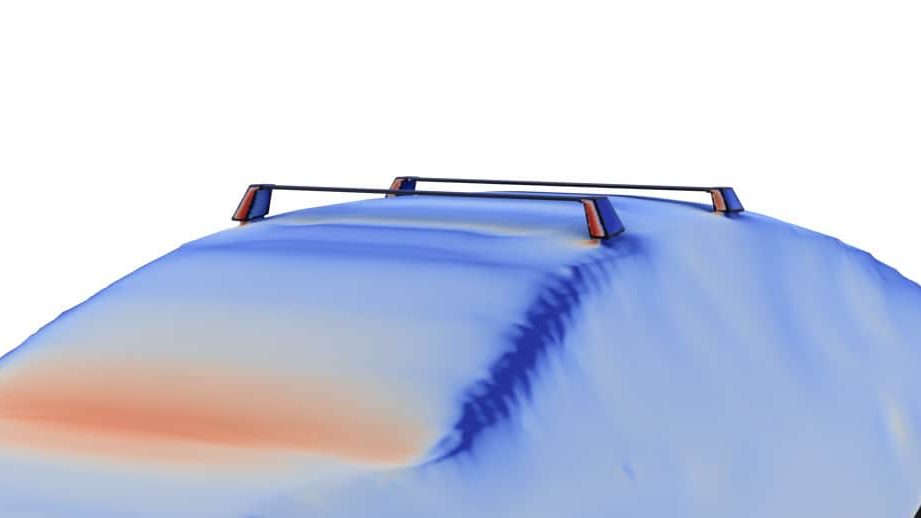
And, in frictional drag, the boundary layer detach sooner, creating more drag.
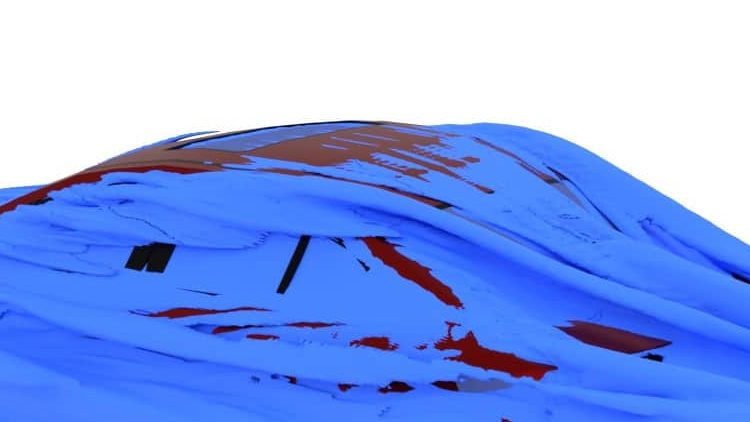
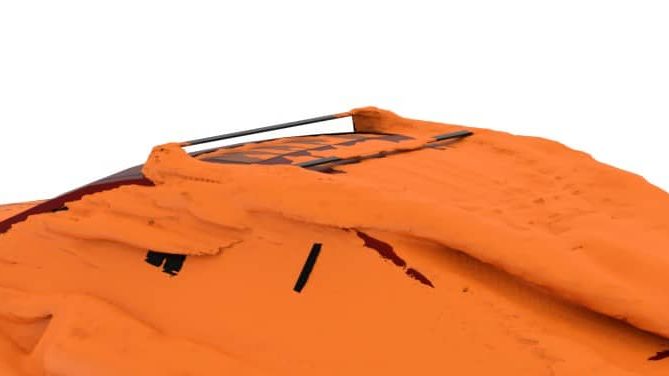
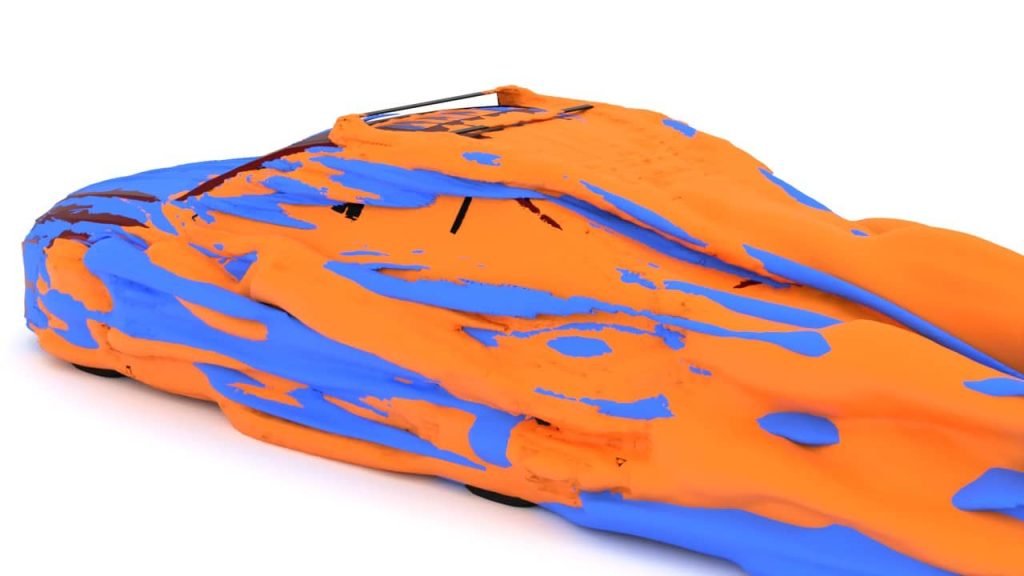
With the help of the YouTuber Sergio Hidalgo, we have carried out a study in which the aerodynamics of a car, with and without a roof rack, have been compared to see how much it affects its consumption. Taking into account that the study car measures 1.7 m wide and 1.45 m high and goes at a speed of 90 km/h, we find that the Cd of the car with a roof rack is 0.23 and the Cd of the car without baca is 0.219. There is a difference of 0.011.
It may seem that the difference is minimal, but this translates into a 5% more cost in gas over about 75.000 km.
If you want to know more about this study, here is the link to the full YouTube video of Sergio Hidalgo’s channel: https://www.youtube.com/watch?v=uvNetXBOxmU&t=76s
Advantages of using the virtual wind tunnel
At Symula we offer the possibility of modeling any aerodynamic body using computational fluid simulation on a computer. Using a full-scale wind tunnel in a purely digital environment offers multiple advantages. For example, the ability to validate design proposals and their impact on vehicle performance before being manufactured. This adds versatility and greatly reduces production time and costs. In addition, it translates into an increase in the quality of the final product, in terms of aerodynamic efficiency, reduction of battery consumption and increase in autonomy.

